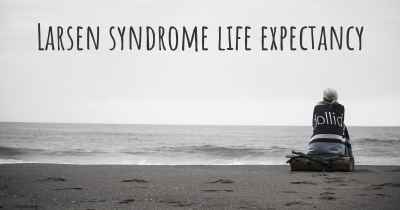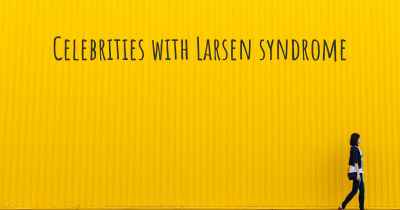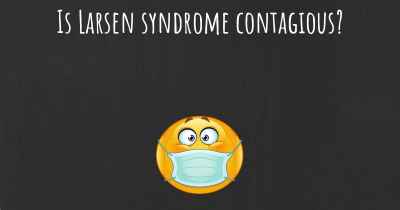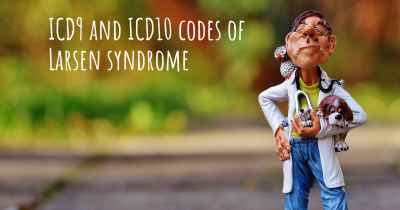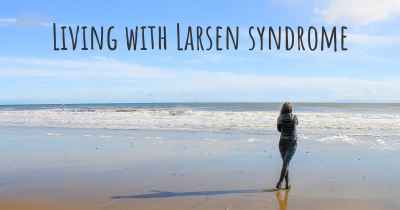What are the best treatments for Larsen syndrome?
See the best treatments for Larsen syndrome here
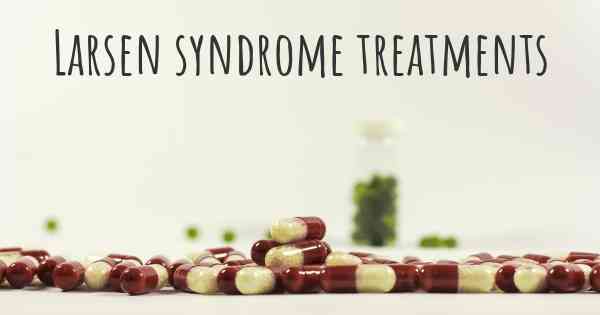
Treatments for Larsen Syndrome
Larsen syndrome is a rare genetic disorder that affects the development of bones and connective tissues. It is characterized by multiple joint dislocations, distinctive facial features, and other skeletal abnormalities. While there is no cure for Larsen syndrome, various treatments can help manage the symptoms and improve the quality of life for individuals with this condition.
1. Orthopedic Interventions
Orthopedic interventions play a crucial role in managing Larsen syndrome. The primary goal is to address joint dislocations and skeletal abnormalities to improve mobility and reduce pain. Orthopedic surgeries may be required to stabilize joints, correct deformities, and improve overall function. These procedures are typically tailored to the specific needs of each individual and may involve joint fusion, tendon transfers, or joint replacement.
2. Physical Therapy
Physical therapy is an essential component of Larsen syndrome management. It focuses on improving muscle strength, joint stability, and range of motion. Physical therapists develop personalized exercise programs to address specific needs and help individuals with Larsen syndrome achieve optimal physical function. Regular physical therapy sessions can also help manage pain and prevent further joint complications.
3. Occupational Therapy
Occupational therapy aims to enhance an individual's ability to perform daily activities and improve their overall independence. Occupational therapists work with individuals with Larsen syndrome to develop strategies and provide assistive devices that facilitate tasks such as dressing, grooming, and feeding. They also address fine motor skills and provide recommendations for adaptive equipment to optimize functional abilities.
4. Pain Management
Individuals with Larsen syndrome often experience chronic pain due to joint dislocations and skeletal abnormalities. Pain management strategies may include the use of nonsteroidal anti-inflammatory drugs (NSAIDs), physical modalities (such as heat or cold therapy), and other pain-relieving techniques. It is important for healthcare providers to work closely with individuals to develop a personalized pain management plan that addresses their specific needs.
5. Genetic Counseling
Genetic counseling is crucial for individuals with Larsen syndrome and their families. Genetic counselors provide information about the condition, its inheritance pattern, and the likelihood of passing it on to future generations. They can also discuss available genetic testing options and help individuals make informed decisions regarding family planning.
6. Psychological Support
Living with a rare genetic disorder like Larsen syndrome can be challenging both physically and emotionally. Psychological support is essential to help individuals and their families cope with the impact of the condition. Support groups, counseling, and therapy can provide a safe space for individuals to share their experiences, learn coping strategies, and receive emotional support.
7. Assistive Devices
Assistive devices can greatly improve the quality of life for individuals with Larsen syndrome. Orthotic devices such as braces, splints, or custom-made shoes can provide support and stability to affected joints. Mobility aids like canes, walkers, or wheelchairs may be necessary for individuals with more severe mobility limitations. These devices help individuals maintain independence and participate in daily activities.
8. Regular Medical Monitoring
Regular medical monitoring is essential for individuals with Larsen syndrome to manage potential complications and ensure early intervention. This may involve regular check-ups with various specialists, including orthopedic surgeons, geneticists, and other healthcare professionals. Monitoring can help identify any changes or new issues that may require prompt treatment.
In conclusion, while there is no cure for Larsen syndrome, a multidisciplinary approach involving orthopedic interventions, physical therapy, occupational therapy, pain management, genetic counseling, psychological support, assistive devices, and regular medical monitoring can significantly improve the quality of life for individuals with this condition. It is important for individuals with Larsen syndrome to work closely with a healthcare team to develop a personalized treatment plan that addresses their specific needs and goals.
Posted Mar 19, 2017 by Ellen 1000
Posted Mar 5, 2017 by Jorge Morato Cadenas 1050
